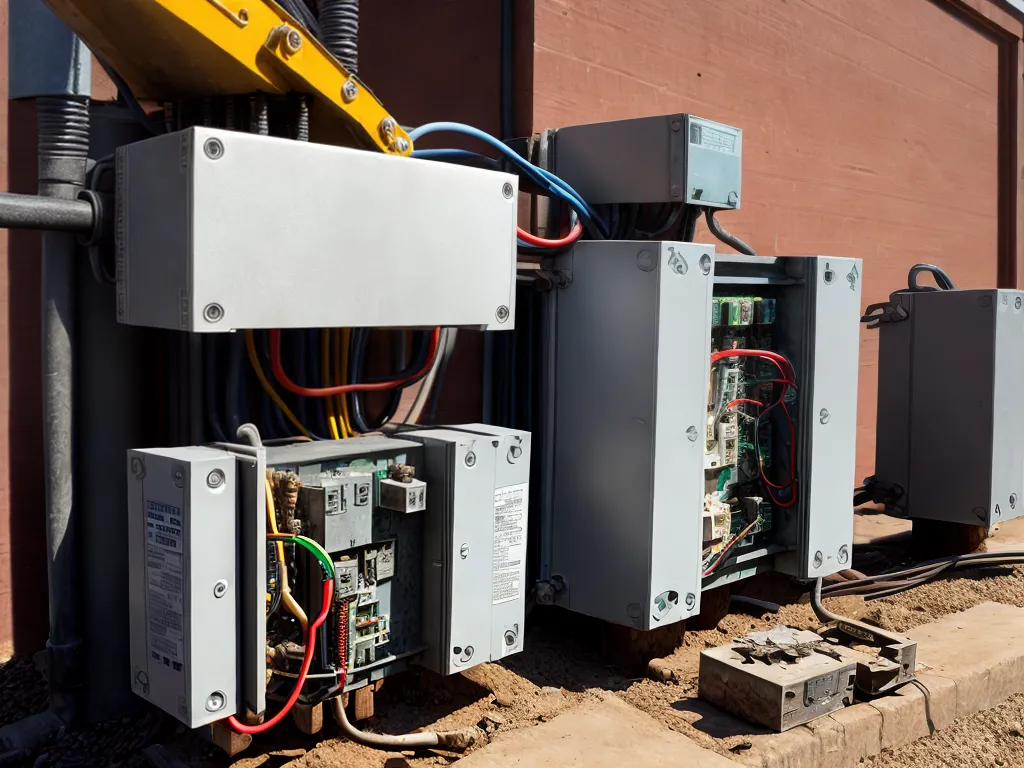
How to Troubleshoot Issues with Your Ballast Transformers
What is a Ballast Transformer?
A ballast transformer is an electrical device that provides the starting voltage for fluorescent lights and regulates the electrical current flowing through the lamp. The ballast transformer controls the flow of current to ensure efficient and stable operation of the fluorescent lamp.
Ballast transformers convert the high voltage from the power lines to the lower voltages required to start the lamp and operate it at the proper current level. They also limit the amount of current flowing through the lamp to prevent overheating and burnout.
The most common types of ballast transformers are magnetic and electronic. Magnetic ballasts use coils of wire and a magnetic core, while electronic ballasts use solid-state components like transistors and capacitors. Electronic ballasts are more energy efficient and operate more quietly.
Common Ballast Transformer Issues
Some common issues that can arise with ballast transformers include:
Failing to Start the Lamps
If the lamps fail to start or only flicker weakly when turned on, the ballast transformer may be failing. Ballasts degrade over time and can eventually stop providing the voltage needed to start the fluorescent tubes.
Flickering Lights
Flickering lights can indicate a problem with the ballast transformer. A defective or damaged ballast may result in inconsistent power flow, causing noticeable flickering.
Buzzing or Humming Noise
Excessive buzzing or humming coming from the light fixtures is often caused by a faulty ballast transformer. This noise results from electromagnetic interference created by the ballast.
Overheating
Faulty ballasts may begin to overheat. This can sometimes be detected by a burning smell coming from the light fixture. Overheating can occur when the ballast fails to properly regulate current.
Dimming Lights
If the fluorescent lamps appear much dimmer than normal, the ballast transformer may be unable to provide the proper voltage to maintain brightness. Insufficient voltage to the lamps will result in dimming.
How to Troubleshoot Ballast Transformer Issues
Here are some steps you can follow to troubleshoot common ballast transformer issues:
1. Check for Proper Voltage Input
Use a multimeter to check the input voltage to the ballast transformer. Input voltage should match what the ballast is rated for, typically 120V or 277V. Incorrect input voltage can cause many problems.
2. Check Connections
Inspect wire connections to make sure they are tight and secure. Loose connections can lead to overheating and arcing.
3. Replace the Lamp
Try replacing the fluorescent tube with a new properly rated lamp. Old or faulty lamps can prevent the ballast from operating correctly.
4. Replace Ballast Capacitor
If the ballast uses a separate capacitor, replace it with an equivalent capacitance and voltage rating. Failed capacitors are a common cause of ballast issues.
5. Listen for Buzzing/Humming
Turn off nearby equipment and listen closely to the ballast transformer. Excessive buzzing or humming often points to a defective ballast.
6. Check for Overheating
Feel along the ballast case after operating for signs of excessive heat. Ballasts should not run hot to the touch. Overheating can damage the ballast and indicate imminent failure.
7. Isolate the Ballast
To confirm the ballast is faulty, wire the lamps directly to power to bypass the ballast. This should light the lamps at full brightness. Dim lighting points to a bad ballast.
8. Replace Ballast If Needed
If troubleshooting indicates the ballast is defective, replace it with a new equivalent ballast. Make sure to match the lamp type, wattage, voltage and other specifications.
Properly troubleshooting and replacing faulty ballast transformers can fix flickering lights, buzzing sounds, and other fluorescent lighting issues. Contact a licensed electrician for assistance if needed. Following safety procedures is crucial when working with electrical components.